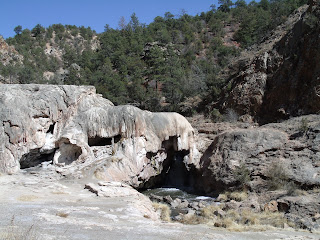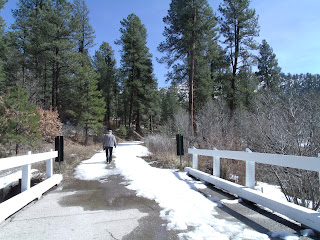Sunday, August 28th - - 135 years ago, late in the afternoon of Sunday June 25th, a battle took place here that has been mired in controversy ever since. It was in this area that 210 men in five companies of the Seventh U.S. Cavalry were killed in action by Lakota (Sioux), Cheyenne, and Arapaho warriors.

“Custer's Last Stand” took place on this hillside where 42 of those 210 men, including George Armstrong Custer, lost their lives. There was supposed to be a three-prong attack but the other two columns of soldiers were delayed. In other skirmishes in the area that day and the next, an additional 58 soldiers and Indian Scouts were killed. It was called the Battle of Little Bighorn by the United States and Battle of the Greasy Grass by the Lakota (Sioux), Northern Cheyenne and Arapaho people.

Custer vastly underestimated the size of the Indian encampment in the valley below; it numbered in the thousands though not all were warriors, there were many women and children as well as older men. (Figures I've seen at various websites put the number anywhere between 6,000 and 12,000 Native Americans camped in the valley.) Thinking that his troops had been discovered, Custer felt that the element of surprise had been lost and that the Indians would quickly leave their camps. So he attacked, splitting his troops in an attempt to surround the encampment. Obviously, that didn't work!

In about a five mile stretch, along the ridges and in the gulleys, the spots where soldiers and some of the Indian Warriors were killed are identified with markers, although in most cases, not with specific names.

Many of the soldiers and the Indian Scouts were mutilated and scalped. However, Custer was not. Some say it was because he was dressed in buckskins rather than a uniform; he had been shot in the temple and in the left chest.

At the top of the hill where Custer made his “last stand” is the memorial to the soldiers and Indian Scouts who lost their lives during the two days of fighting. Their names are inscribed on the sides of the monument.

It is estimated that about 60 Indian Warriors were killed in the fighting. The spots where 14 of them were killed have been identified with reddish-brown markers. These two are for Cheyenne Warriors “Hahpehe'Onahe” aka Closed Hand and “A'Kavehe'Onahe” aka Limber Bones who “fell here on June 25, 1876 while defending the Cheyenne way of life”.

The Battlefield is dotted with interpretive signs that help in understanding what took place and when. This sign is across the road from the memorial to the fallen soldiers. The visitor center also has a 17-minute video and park Rangers give a 20-minute talk every half hour or so. The video and talks are quite interesting.

Across the road and a short distance from the memorial to the soldiers, is the Indian memorial, which was authorized in 1991 along with a law that changed the name from Custer Battlefield National Monument to Little Bighorn Battlefield National Monument. A large circular area contains the above sculpture as well as a wall of displays embedded in black granite. It was quite impressive and very informative, presenting just a little bit of the battle from the perspective of the Native Americans.

A detail of the sculpture.

Some of the Indian Scouts in the employ of the U.S. Army and with the 7th Cavalry were members of the Crow nation. The Crow considered the Lakota, Cheyenne, and Arapaho people to be their enemies because, among other things, the Sioux tribes were encroaching on what had traditionally been Crow territory.

The panel above depicts the scene of the Battle of The Greasy Grass as drawn by White Bird of the Northern Cheyenne.

On August 10, 1983 a prairie fire swept over the battlefield, burning nearly 600 acres of dense, thick vegetation. For five weeks in May and June of 1984 the National Park Service conducted a systematic archeological survey of the battlefield. They recovered 1,159 artifacts including arrow heads, bullets, cartridges, buttons, coins, soldier skeletal remains, boots, military and horse equipment, and personal items of soldiers and warriors. Archeological evidence, used in conjunction with accounts of the battle participants and placement of soldier bodies help in reconstructing the battle. Additional archeological surveys were conducted in later years and will continue in the future.

A four mile drive along the ridges of the battlefield provides some idea of the extent of the battle and the challenges wrought by the terrain.

The markers for an Interpreter Guide “Neesirapat” aka Bloody Knife and two Indian Scouts “Hukos-ta-rikus” aka Sgt Bobtail Bull and “Naahukoos Ciripaslt” aka Little Brave who fell here “while defending the Arikara way of life”.
Much has been written about the Battle of Little Bighorn with various interpretations of the events leading up to the battle and of what actually occurred during the battle – just do a search for it and I'm sure you'll come up with quite a variety of websites! It seems that History is always open to new interpretations, so regardless of your own feelings and ideas of what happened here I'm also sure you will learn something new - I know I did!










 The picture is not dated. Amanda was born on September 25, 1860 and was the first of four children of William and Rachel (Van Curen) Alexander. Amanda was married to Samuel Bray Wiseman on June 7, 1883 (her sister Laura married Sam's brother Henry).
The picture is not dated. Amanda was born on September 25, 1860 and was the first of four children of William and Rachel (Van Curen) Alexander. Amanda was married to Samuel Bray Wiseman on June 7, 1883 (her sister Laura married Sam's brother Henry).


































